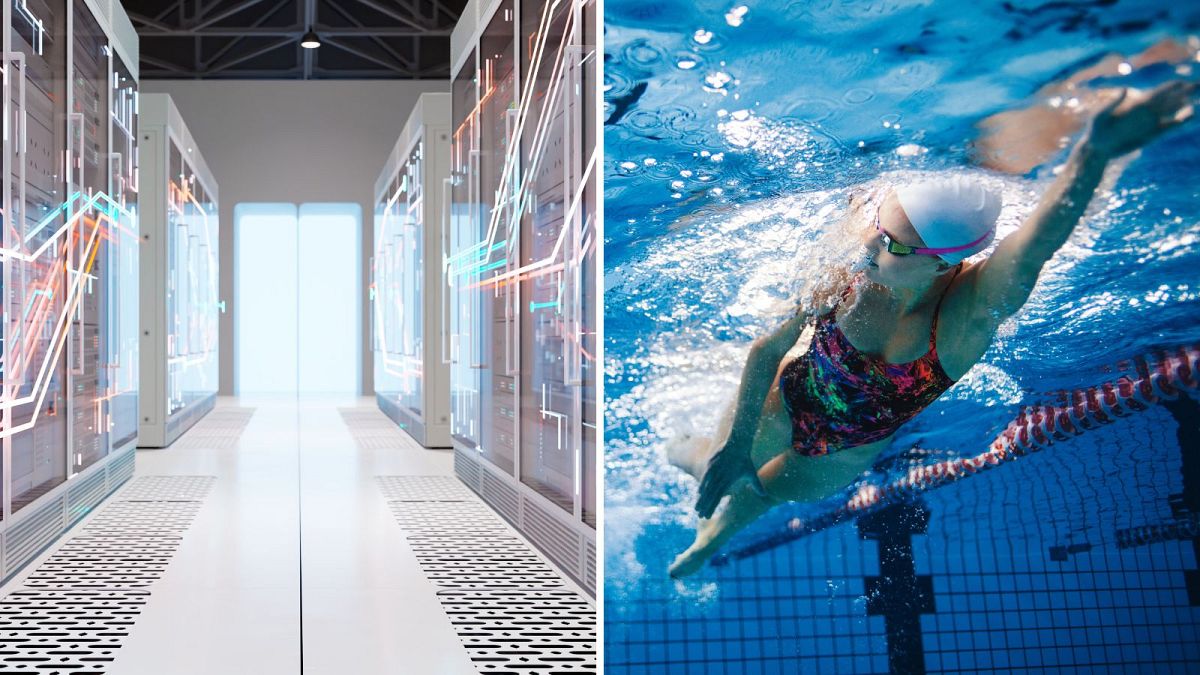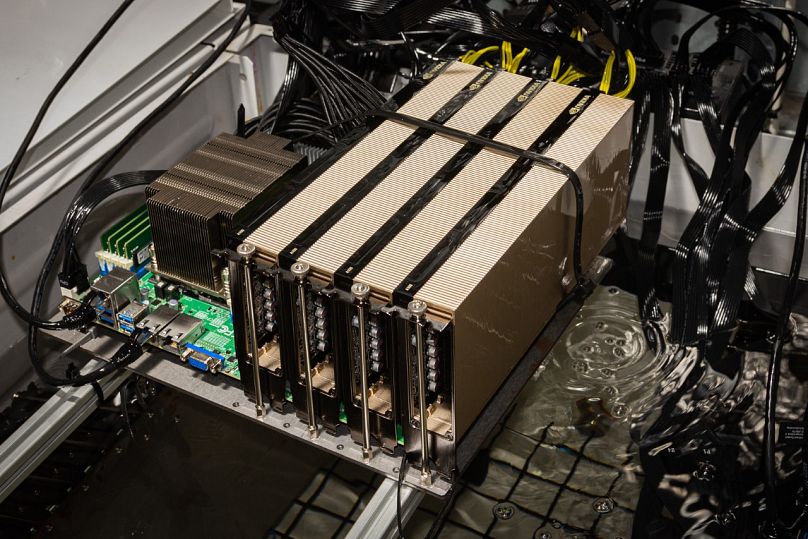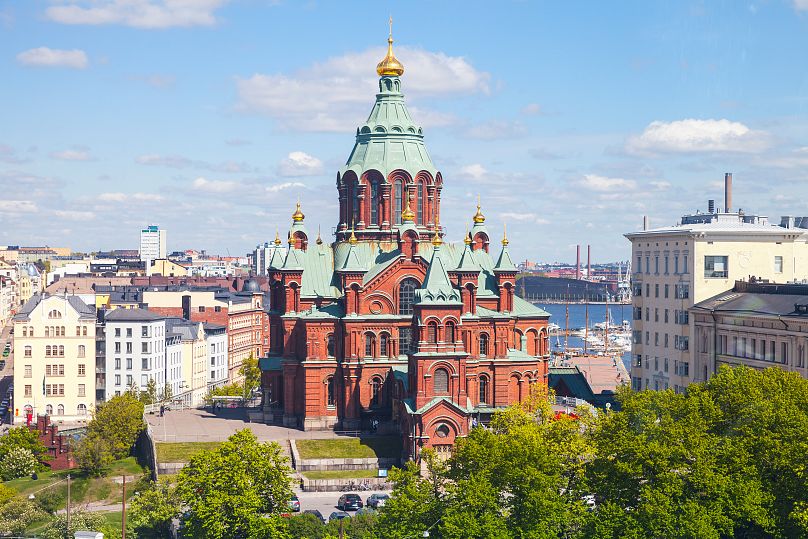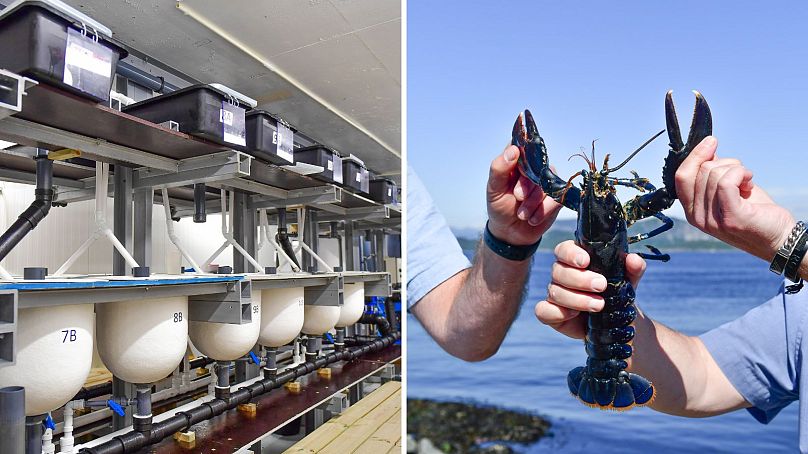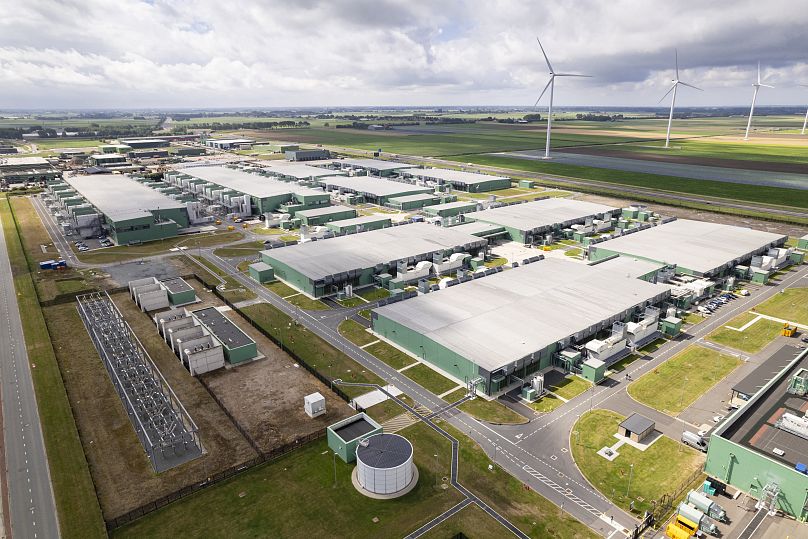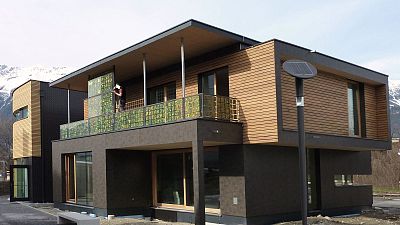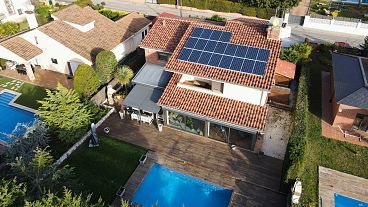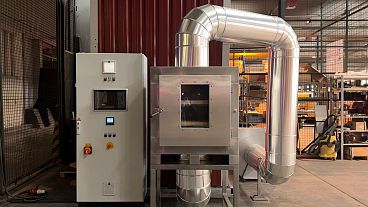There's plenty of niche options for the heat from computer warehouses. But these aren't a 'panacea' for a power-hungry industry.
When the high tech world of data centres touches the fabric of public life, it’s generally given positive coverage.
From warming a swimming pool in Devon to keeping students in Dublin toasty, these data processing hubs get good press when they pass on the heat they generate.
The heat radiates from the servers (stacks of computers) inside them. As energy bills soar, there’s obvious interest in recouping this otherwise wasted energy. One study has even estimated that the excess heat from data centres and other sites and appliances could power most of Europe.
On the other hand, we’re increasingly aware of the heavy burden these engine rooms of the internet place on the environment.
The ethereal-sounding Cloud - providing remote data storage - is something far more tempestuous in reality. It demands vast amounts of electricity and water to keep data centres going and cool them down.
In water-stressed Arizona, for example, there are warehouses full of computers that are allowed to use more than one billion litres of water a year, enough to fill an Olympic-sized swimming pool every day.
So is there a way to bridge data centres’ oversized appetite for resources to their potential as producers?
How is data centre heat being recycled?
A washing-machine-sized data centre in Exmouth, Devon is one of the latest to put its heat to good use, warming the waters of a public swimming pool.
It’s a relatively simple process: the servers inside the white box are surrounded by oil to capture their heat. This hot oil is then pumped through a heat exchanger to warm the pool to 30C, 60 per cent of the time.
The start-up behind the initiative, Deep Green, has got an innovative model going - providing the “digital boiler” to Exmouth Leisure Centre for free in return for hosting its kit.
Location is a huge factor behind data centre usage and Deep Green is on a mission to decentralise the tech. If more companies switch over to its ‘cleaner’ computing services, the start-up says it could deploy boxes at all public swimming pools in England. And the more work happening in its servers, the hotter they get.
Recycling data centre heat is nothing new. In 2010, Finnish IT company Academica installed a 2MW data centre in the caves beneath Helsinki’s Orthodox Uspenski Cathedral.
Water warmed while cooling the servers provides heat for hundreds of homes in the city via its district heating system.
This type of central heating system sends hot water through a network of insulated pipes (through underground tunnels, in Helsinki), delivering thermal energy rather than fuel that must then be converted to heat.
Some European countries are ahead of the game on data centre heat
Nordic countries Denmark and Sweden, and Latvia and Lithuania in eastern Europe have a tradition of district heating. It gives them a head start when it comes to integrating excess heat from data centres.
But district heating can operate on a smaller scale too. Ireland began constructing a network in Tallaght town in May 2021, and Amazon’s local data centre is now supplying it with hot water (via an energy centre and heat pumps). Students at Technological University Dublin are feeling the benefit.
In its latest report the IEA says that the decarbonisation potential of district heating is largely untapped, as fossil fuels still dominate district network supplies globally.
There’s been plenty of other appealing examples over the years.
A land-based lobster farm in Norway, an algae farm in Germany and a hospital in Vienna are some of the diverse beneficiaries of data centre heat. Researchers are also looking at ways that data centres and vertical farms can collaborate rather than compete for space.
But there’s a limit to the good PR stories.
Why isn’t data centre heat a big solution?
“The ideas here are very novel and they're very welcome because it's an industry that has a carbon footprint that must be reduced,” says Paul Deane, a research fellow at University College Cork in Ireland.
“But unfortunately these types of schemes are relatively niche.”
There are a number of reasons for that. Large data centres tend to be located in industrial zones outside of residential areas, a long way from customers who might want to take the heat.
Google, Facebook and other big corporate owners are less interested in niche applications, he says.
“They benefit significantly from economies of scale and from sizes of scale that suit their operations economically and actually environmentally as well,” explains Deane. Larger centres tend to be more efficient and have a relatively smaller footprint.
Furthermore, the type of heat that most centres produce is at a low temperature. This low-grade heat must be compressed into a higher grade to be useful, which tends to be prohibitively expensive.
In Germany, a proposal that data centres repurpose their heat is being frustrated by the fact that utility companies would need to install costly heat pumps to upgrade it.
And some places simply have better options. Waste heat from heavy industries like smelting, or incineration facilities, comes out hotter so it is a stronger player in the district heating market.
In summary, these barriers “don't tend to point in the direction of this being a game changer or a kind of a panacea for data centres,” says Deane.
“Look, they're nice ideas in principle but the practice and the delivery of them is unfortunately very difficult.”
How do we make data centres more environmentally impactful?
That doesn’t mean we should just enjoy our data centre-warmed lettuce or butterfly stroke, and throw our hands up about the wider cost to the environment.
Though these facilities are unlikely to redeem themselves from a heating point of view, there are ways to lessen their environmental impact while still reaping the economic rewards.
This has been a particular focus for Ireland, which has a gigantic data centre presence for a small country. It is at odds with its climate ambitions.
Researchers have warned that data centres could use as much as 70 per cent of electricity grid capacity by 2030.
“Essentially - and the data centre owners are very aware of this already - if they want to reduce their environmental footprint, they must increase the consumption of renewable electricity,” says Deane.
Many companies have wind and solar projects linked to them, but finding ways to store large amounts of electricity - for use on breezeless, grey days - is key.
“A lot of these data centre companies have big and deep commitments to net zero targets, but they also have deep pockets,” he adds.
Using their ‘first mover advantage’ to roll out renewable batteries, for example, is the kind of leadership we need from big tech companies.
How can data centres cope with drops in renewable energy?
Data centres can also reduce their electricity consumption when the wind drops.
“They could stop doing non-critical tasks, tagging photographs or uploading music or whatever and doing that at a time later in the day or week when they can use clean power,” suggests Deane.
“But not every data centre owner can do that because some of them are [processing] medical records or financial records that will be time-critical.”
There’s clearly no one-size-fits-all solution. And knowing what individual data centres are up to is difficult since their operations are, understandably, “shrouded in confidentiality and secrecy”.
Some interesting principles are emerging, however. Since Google has data centres all over the world, the tech giant is looking at diverting tasks from one country to another when there are more favourable conditions and to make the most of clean electricity supplies.
Obviously, this kind of digital leapfrogging around the world would not be possible for a small local data centre.
But whichever way you cut it, big data needs to clean up.
“It's an industry that we need, an industry that we all benefit from,” says Deane. “But it's an industry that does need to become cleaner and deliver on the targets that they have set.”
